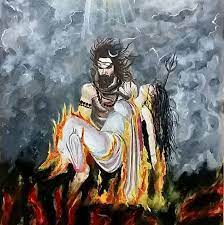Devi Sati: A Goddess Who Chose Love and Dignity
Introduction
In the world of Hindu mythology, there are many gods and goddesses. But few stories touch the heart like that of Devi Sati—a goddess who stood for love, dignity, and strength. Her life shows us that even goddess face pain, but how they respond to it creates history.
This is the story of a divine woman who chose love over fear—and self-respect over silence.

Who Was Devi Sati?
Devi Sati was the daughter of King Daksha, one of the sons of Lord Brahma. From a young age, she was deeply devoted to Lord Shiva, the god who lived in meditation on Mount Kailash. Though Shiva was a great power, he didn’t live like a king. He wore ash, stayed in cremation grounds, and lived a simple, detached life.
Daksha did not approve of Shiva. He wanted a son-in-law with pride and position, not someone who looked like a wandering ascetic. But Sati was not interested in power or luxury. Her heart chose Shiva, and with time, they got married.
A Marriage That Shook Traditions
For Sati, Shiva was not just her husband—he was her soul’s truth. Their marriage was a union of love, equality, and deep spiritual connection. But for her father, it was a mistake he could not forgive.
Later, Daksha arranged a grand yajna (a fire sacrifice). He invited all gods and kings—but deliberately left out Shiva and Sati. Still, Sati decided to attend. She hoped her father would accept her choice and respect Shiva.
The Fire of Self-Respect
At the yajna, Daksha continued to speak badly about Shiva. Sati, surrounded by people who laughed and agreed with him, was heartbroken. She had come with love and peace—but received hatred and shame.
In that moment, Sati made a powerful decision. She said:
“If I, as Sati, am not respected in my father’s house, I give up this body born from him.”
And with full awareness, she walked into the fire of the yajna and gave up her life.
This was not just an act of pain—it was an act of dignity. Sati refused to live in a world where her love and beliefs were insulted.
Shiva’s Grief and the Birth of Sacred Places
When Shiva heard of Sati’s death, he was filled with grief and rage. He lifted her burning body and wandered across the world, crying in pain. The gods were afraid the world would break apart.
To calm him, Lord Vishnu used his Sudarshan Chakra to cut Sati’s body into pieces. Each part fell in a different place across India. These places became the Shakti Peethas—sacred temples where the energy of Sati still lives.
Even in death, Sati’s spirit gave birth to holy power and devotion.
Rebirth as Parvati: Love Never Dies
But Sati’s story didn’t end in fire. She was later reborn as Parvati, the daughter of the Himalayas. Once again, she found Lord Shiva. After years of prayer and strength, she became his wife again—this time, with the blessings of all.
As Parvati, she gave birth to Ganesha and Kartikeya, and became the divine mother of the universe.
Her journey shows that true love may fall—but it always rises again.
Conclusion
Devi Sati is not just a goddess from the past—she is a symbol of strength, love, and self-respect that speaks to every generation. Her fire still burns in the temples of India, and in the hearts of those who choose love with dignity.
Let us remember her not just in prayers, but in how we live—with courage, truth, and honor.
